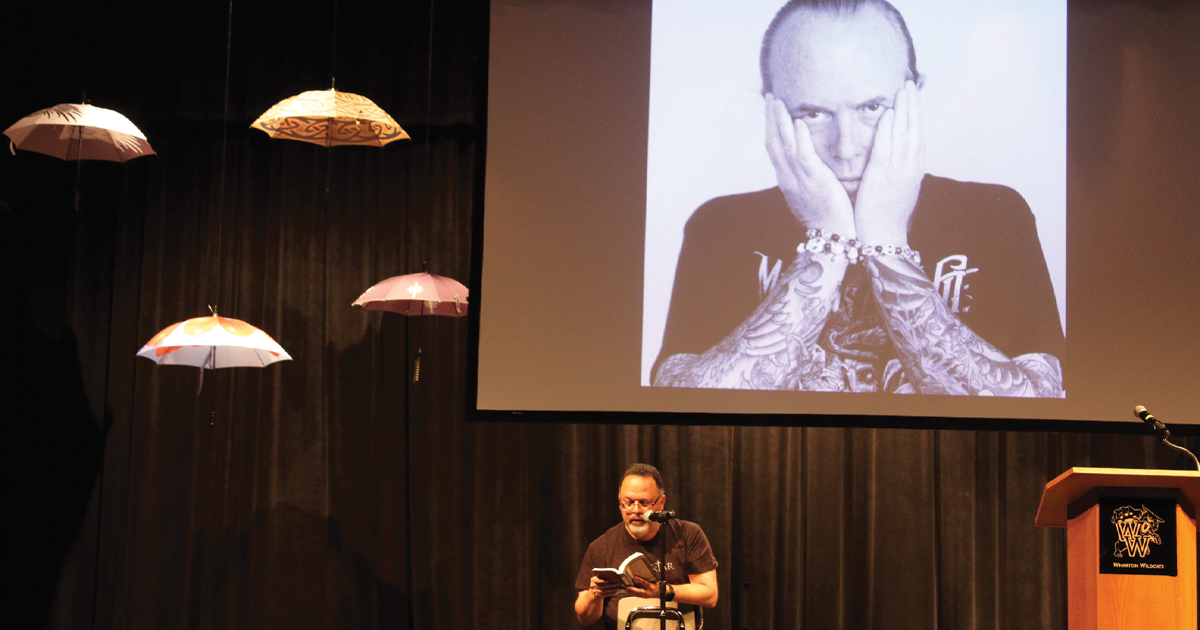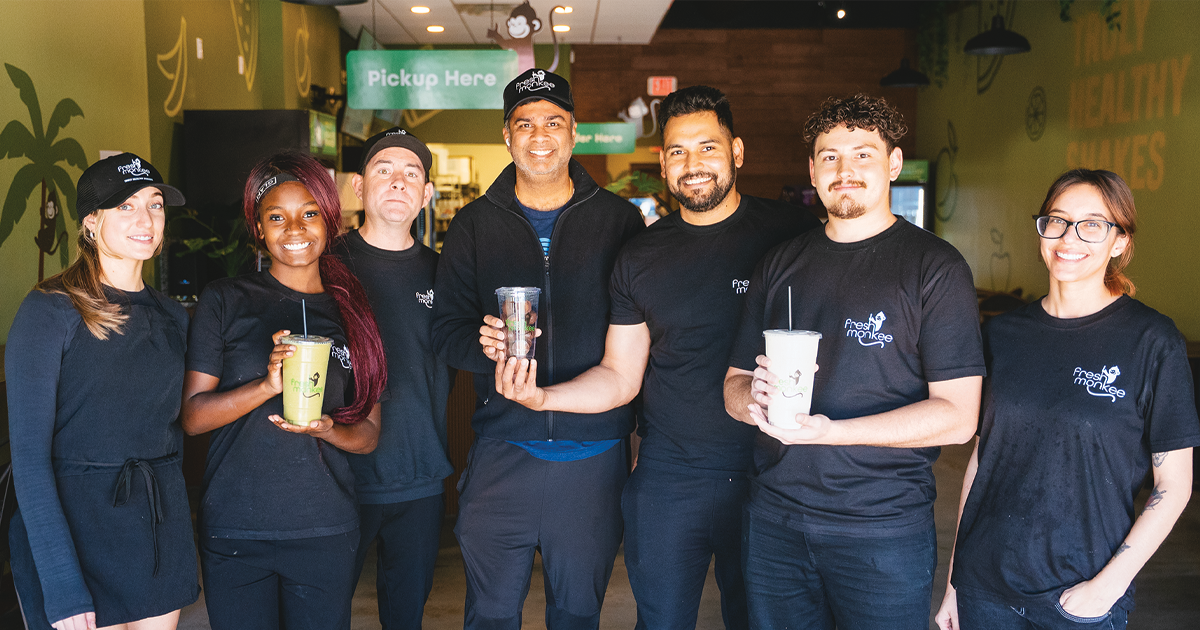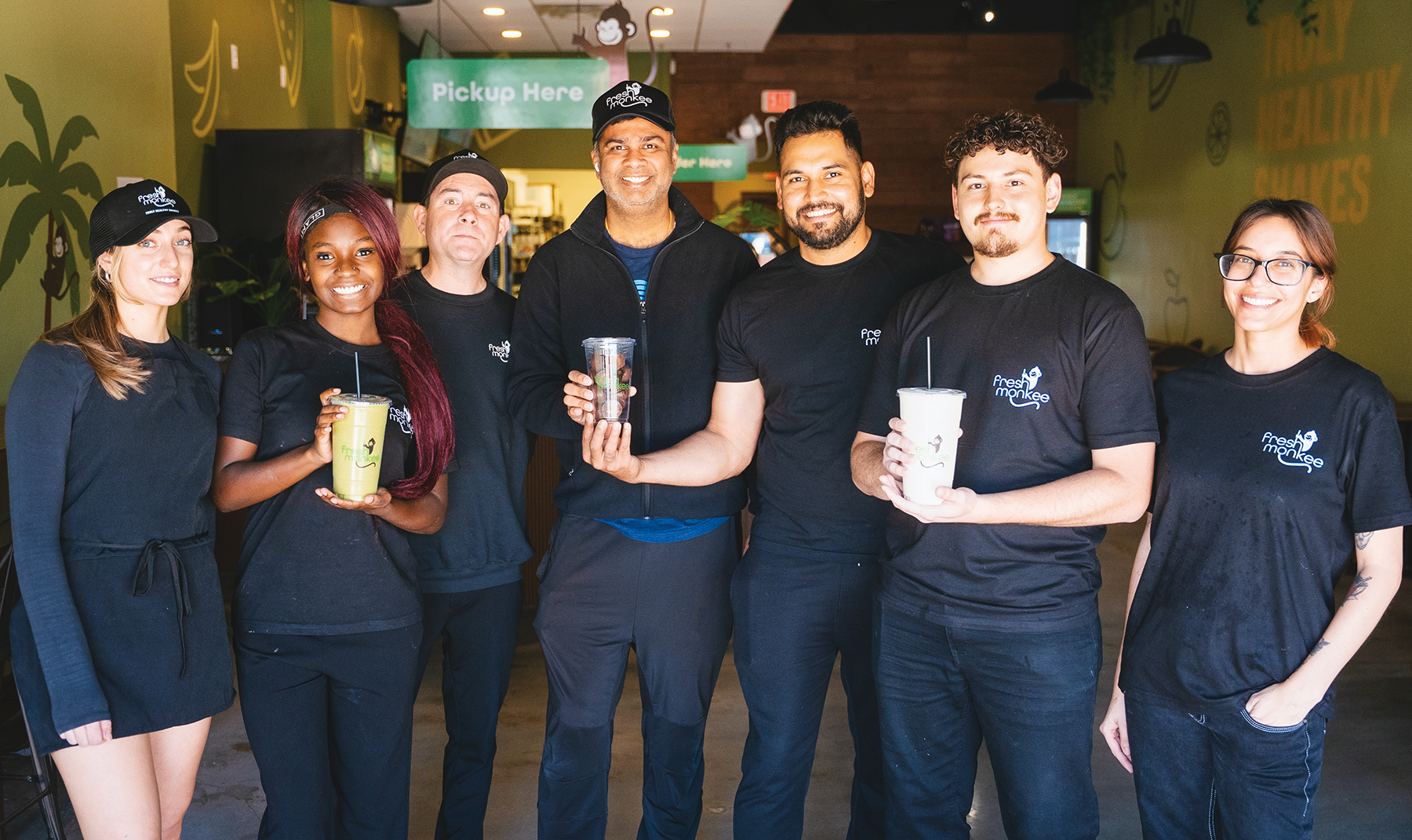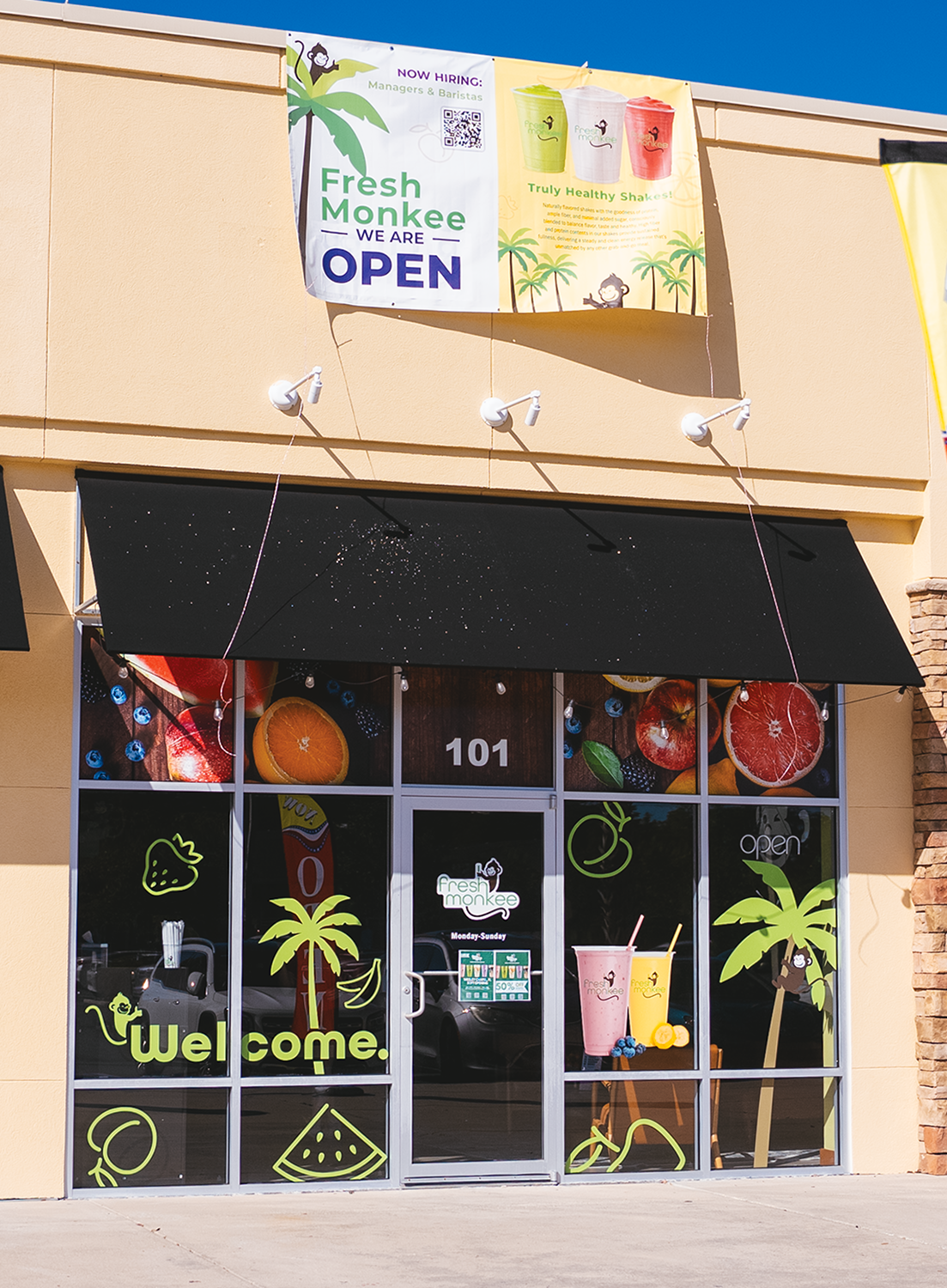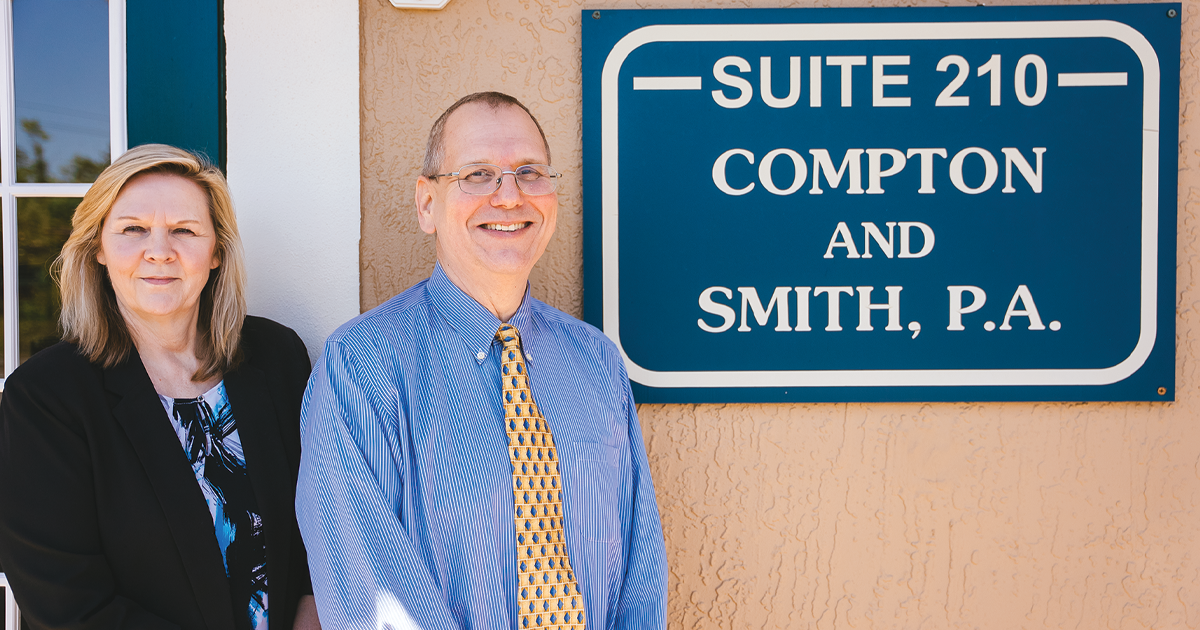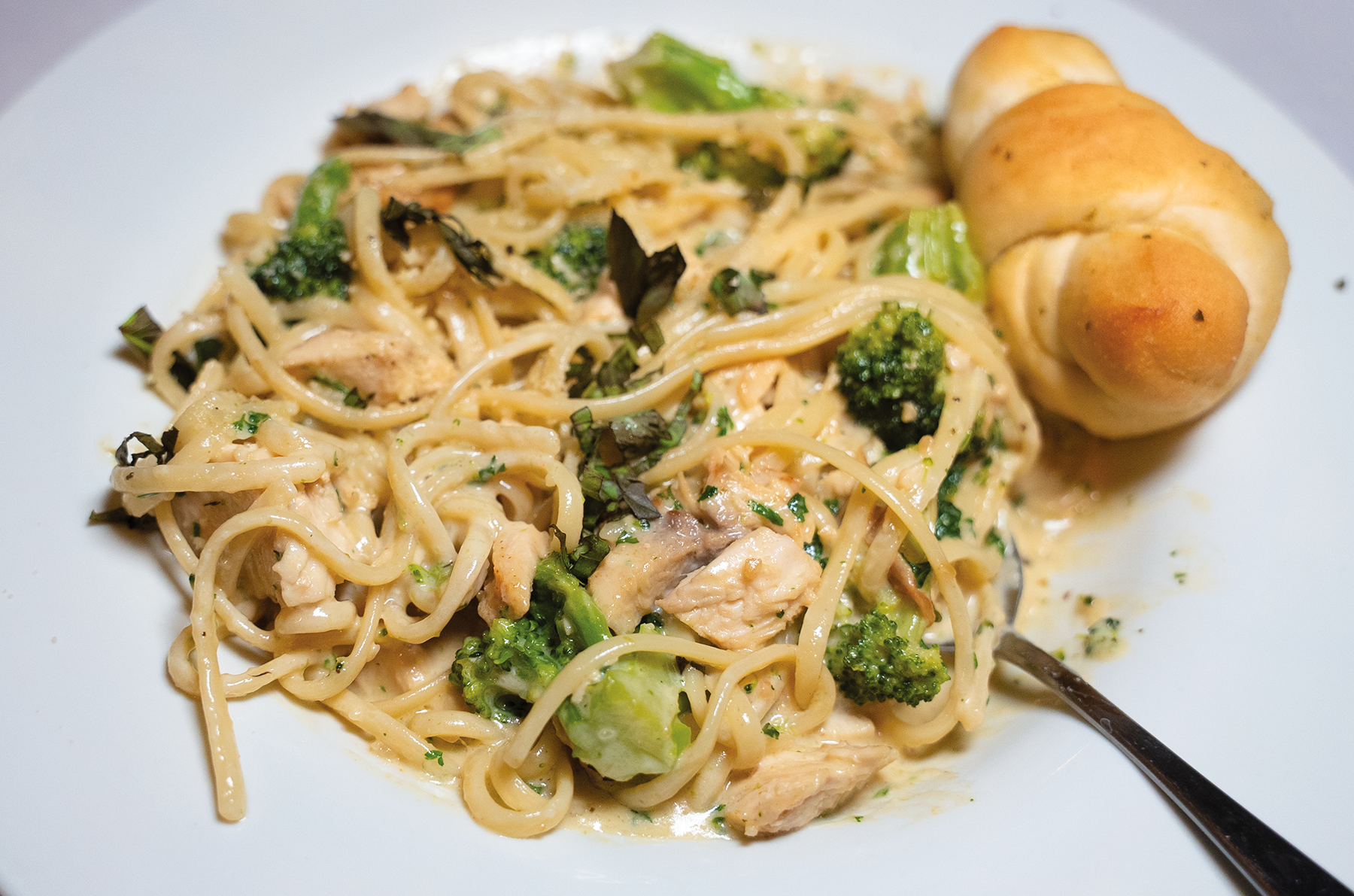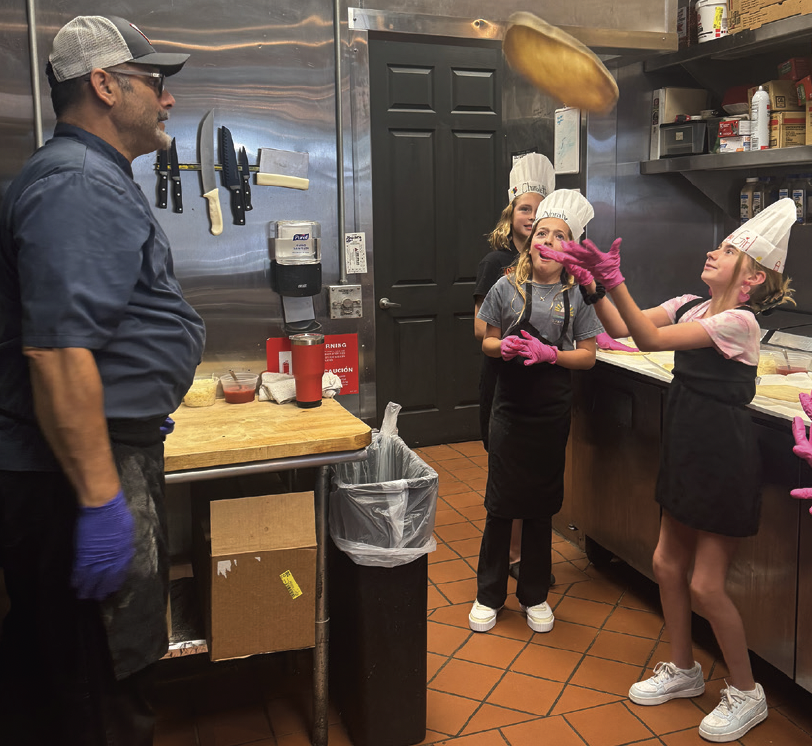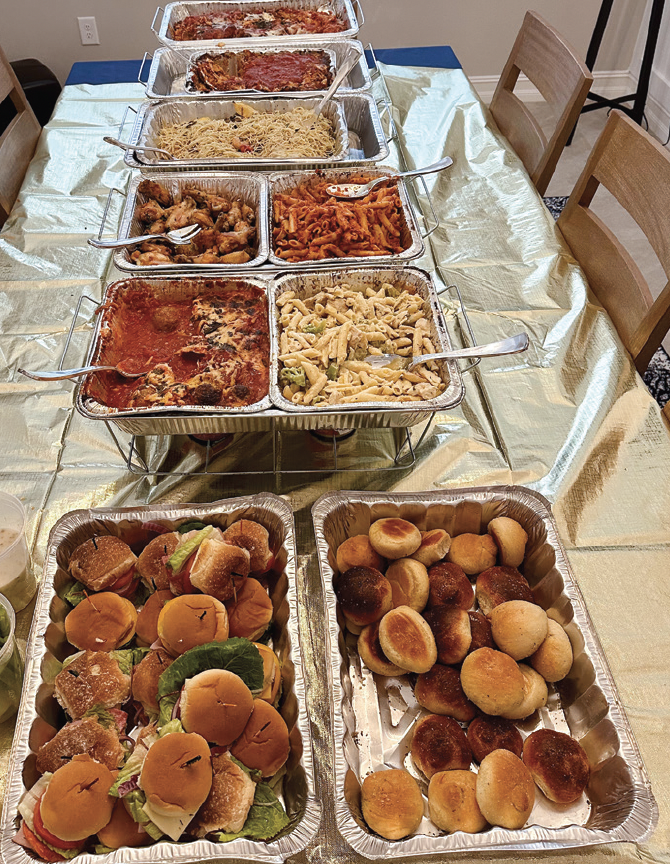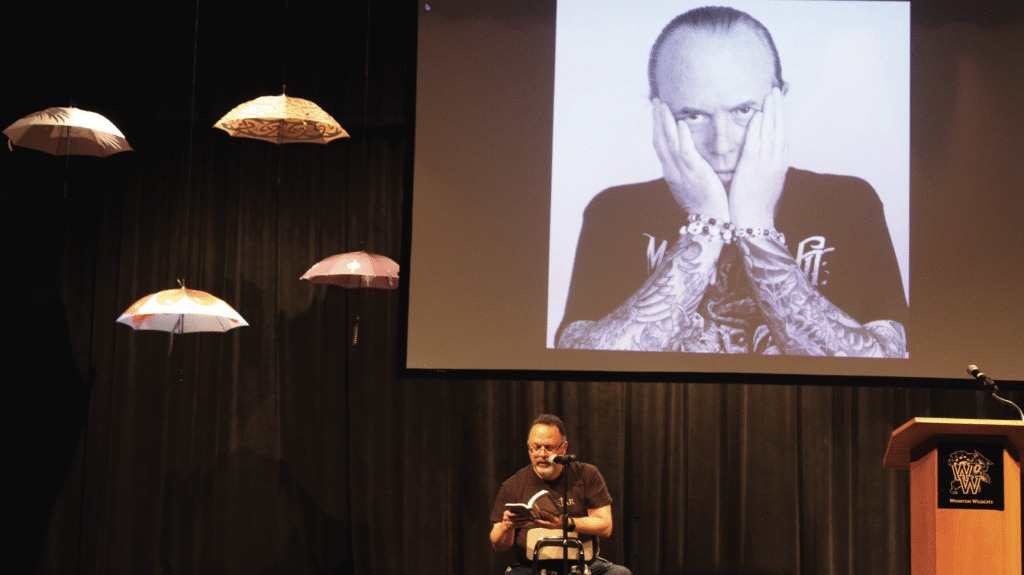
When you know someone is a good person who has lived a life in service to others, you often still don’t really know the impact that person has made, or just how many people they helped — until you attend their Celebration of Life.
Such was the case of former Wharton High theatre teacher James “Jas” Warren. As I mentioned in my page 3 editorial in our last issue, Jas passed away after suffering a heart attack at the age of 61, while he and his wife Renee were on a FaceTime call with their daughter Abby and her three sons.
I had seen probably only four or five of the 100+ shows (including, I believe, two of his original works) Jas produced with his LSA (Lighting & Sound America) Repertory Theatre Company during his time at Wharton, and had spoken with him after most of those performances. It was clear at that time that his students — and their parents — loved him. And, as a native New Yorker who had seen at least 50-60 Broadway and Off-Broadway shows in my lifetime, the power of the performances Jas directed let me know just how good he was at his job.
What I had no idea about, however, was just how powerful his impact was on his students until I attended the Celebration of Life held at Wharton on Nov. 8 in his honor. Even though I ended up leaving early because I had another event to get to, the hour+ I spent listening to his long-time friend and fellow Wharton teacher Carlos Rosaly, Jas’ daughter Abigail Rodriguez and son Jackson Warren, followed by at least eight of the dozen or so total speakers and performers that day, it was clear to me that I didn’t really know Jas Warren — or just how many children he impacted, how many lives he changed — at all.
And I am as saddened by that fact today as I was uplifted by what I saw and hear that day.
Act I — Abby, Evan, Jackson & Carlos
I sat next to my friends Dr. Elliot and Pam Cazes, whose son Evan is one of Abby’s best friends. It was Pam who let me know that Jas had passed and when and where the Celebration of Life would be held.
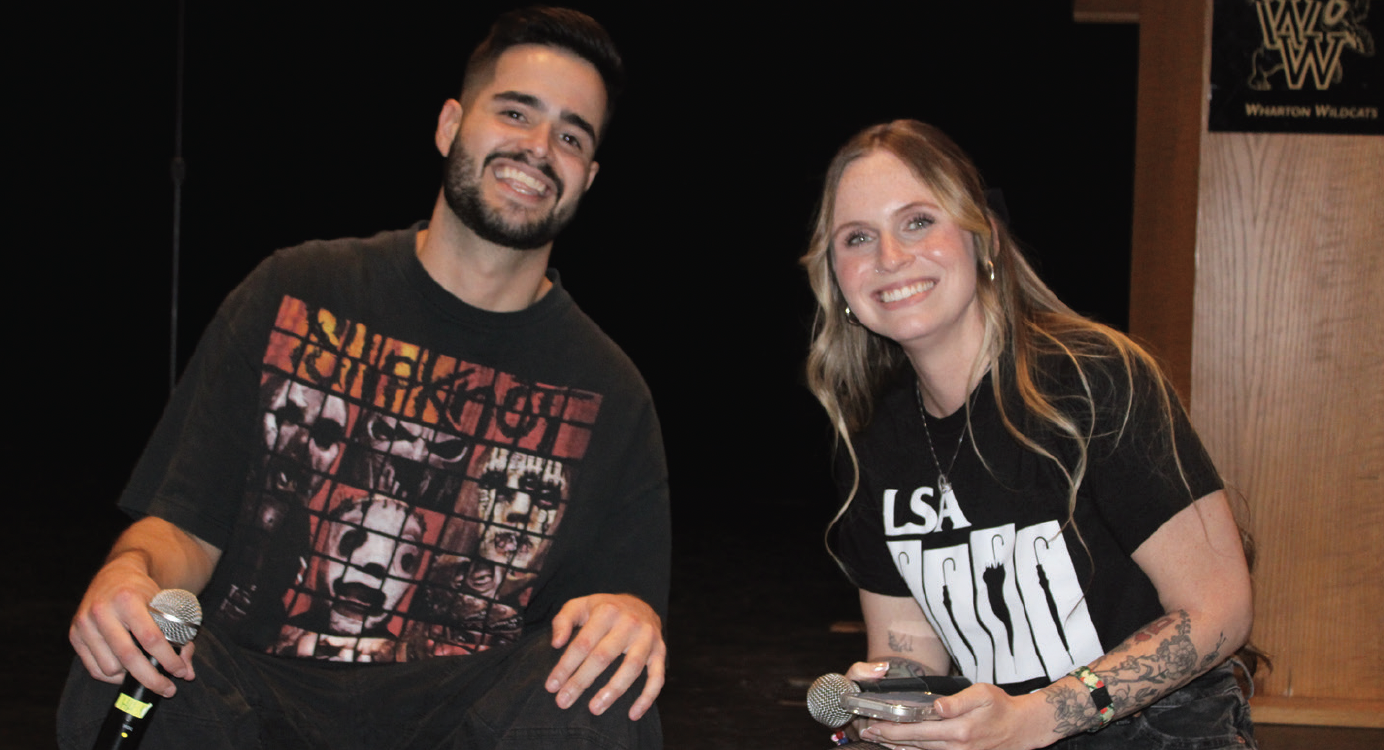
When I arrived, Evan and Abby were already sitting on the stage (photo), getting ready to sing the haunting “Those You’ve Known” from the Tony Award-winning musical “Spring Awakening.” How both of them were able to make it all the way through this beautiful, but overwhelmingly sad song is a tribute to the training both of them received from Abby’s dad. Believe me when I say that there literally was not another dry eye in the house:
“Those you’ve known
And lost still walk behind you
All alone
They linger till they find you
Without them
The world grows dark around you
And nothing is the same
Until you know that they have found you”
When they finished singing, recently retired Wharton High math teacher (and baseball announcer) Carlos Rosaly — one of Jas’ closest friends and a fellow original member of the Wharton faculty when the school opened for the 1997-98 school year, was the first to speak..
Carlos recounted humorous stories of his long relationship at the school with Jas and their shared love of rock n roll.
“The difficulty for us in his passage is that he wasn’t done telling stories and we weren’t done listening to him,” Carlos said. “We weren’t done watching it all on stage. And that’s our loss.”
He also noted that Jas loved everything about the performances — “the auditions, the callbacks, the rehearsals, the running laps around the office, the vocal warmups, the read-throughs, the curtains up, the spotlights, the music, the show, he loved it all. Thank you, James.”
Carlos also read a moving passage from the book Jesus in Blue Jeans by Laurie Beth Jones. But, it was all just getting started.
Next up was Abby, who said her dad thought she never cried. “Well, Dad, I have never cried more in my life than I have in the past three weeks. Three weeks ago yesterday, I heard his voice for the last time. Every day since then, I wake up and hope that the nightmare is over.”
She then retold the story of how she was on the phone with them when her dad was in the throes of the heart attack. After telling her mom to call 9-1-1, Abby waited to hear back from her.
“Not too much time passed before I called my mom and they said ‘He didn’t make it.’ I remember standing in front of my fridge and dropping to the floor. I called my husband (who is in the Army) and said words I didn’t expect to end up saying, ‘Please come home.’”
She added, “All I could think of were the things I wished I could have said if I knew it was his last moment…He was the kind of dad that everyone wanted and the kind of director that kids in other public schools dreamed of having. And I was lucky enough to get him. I idolized him…and there came a point where he thought I stopped, but I never actually stopped.”
Abby also said that her earliest memories were on the very same stage in that Wharton auditorium. “He created magic on this stage,” she said. “Whether it was one of the One Act [plays] he’d spend all summer writing, or how he found the most perfect songs for those shows that he edited to perfection. He changed lives, not just through his art, but through who he was. He created lifelong friendships for most of us and introduced many of us to our spouses and our own families. And I’m living proof of that.”
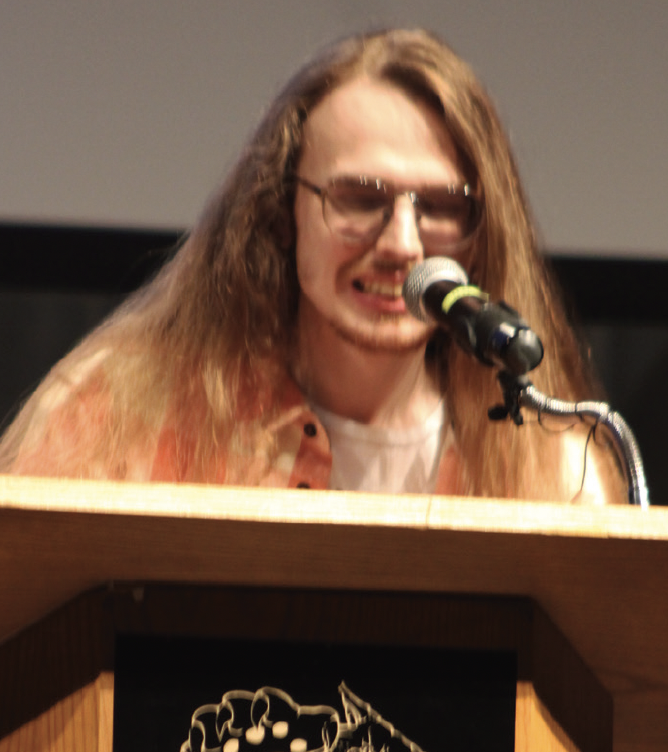
She also recounted how her dad officiated her wedding, how he supported her every time she announced she was pregnant, their Walmart runs during school, their trips to New York City to see Broadway shows. She also gave her many definitions of what grief is now that her dad is gone.
“I will keep saying it: I don’t know how to live in a world where he doesn’t exist. He deserves so much more time and he has so many more stories to write…and to watch my kids grow up. Everything I am is because of him — my love of theatre, music, reading, writing, dark humor, everything. So, for now, I will still send a text when something reminds me of you, I will still cry for you and I will think of you every day and I will think about what life would be like if you were still here. Until we meet again.”
Jas’ son Jackson (above right) said that, “Everywhere I look, he is there. I just can’t believe that he’s still gone.” Jackson said he wished his dad could watch another season of another show he loved. And how every moment that he thinks about his dad, “even the moments that I didn’t think would matter at all, are just so special. It’s just a lesson to learn — you never know how much time left you have with someone. Don’t live with regrets. Do what you want to do before it’s too late because you never know when it will be too late. I’m just glad that my final words to him were ‘I love you’ and I gave him a hug. It doesn’t solve anything, but it helps.”
Act II — All Of His ‘Other’ Kids
Next up was Tori Fuson, who sang an incredible rendition of the song “Leave Me Here” by Hem. This is just the chorus:
“So, as I rise, I will reach for the livin’
And I’ll say no prayer
Cuz tonight he brought me to heaven
And left me here”
Tori then added, “Mr. Warren was more than a teacher for us. He wanted to create the best works and he did, because he created all of us and that’s the reason we’re all here today. He taught us, at a very young age, about injustice and loss, love and human connection. He showed us that acting is not about pretending. It’s about telling the truth. He had a way of drawing discipline and authenticity from children, which is a really difficult thing to do. He changed every student who walked in his doors. And, for many of us, this auditorium was our home.”

Tori was followed by Nicole Nouri, who put the Rolling Stones themselves to shame with her soaring rendition of “Wild Horses.”
Nicole was followed by Stephen Arment and Lizzy Clark (left photo), who were both in Wharton’s first graduating class in 2000.
Stephen, who is now the drama teacher at Durant High in Plant City, said, “There are a lot of ways to talk bout someone who shaped your life, but the truest place I could start is this. I loved being around him. He did not just teach theatre. He built families. Entire generations of us found our ‘people’ and our purpose under a new direction. When I arrived at [Wharton], he was one of the first people who made me feel seen for who I could become. We have each carried so many of his lessons with us. Not just how to block a scene, but how to make people feel seen before they even believe in themselves.”
Stephen also said he remembered when Jas and Renee brought their newborn daughter, Abby, “in to meet us for the first time. He wasn’t just introducing his daughter to his students, he was introducing her to a community that she would always be connected to, whether she wanted to or not. It was like watching two parts of his world intersect — the family he went home to and the family that he built in this place. He poured so much of himself into us that we walked away feeling like we carried a piece of him into adulthood. So, to his family, thank you for sharing him with us.”
Stephen concluded, “I became a high school drama teacher because of him. He wasn’t just teaching theatre, he was shaping what theatre education looked like across the board. He didn’t just attend [theatre] festivals, he helped build the blueprint for how they are run — the systems, the traditions, the way we gather, the way they create. So much of that traces back to him. So, thank you, Mr. Warren. We’ll take it from here.”
When it was Lindsay’s turn to speak, she paid Stephen one of the best compliments she could: “I just have to say that I had the honor of watching Stephen run a rehearsal at his school today and he is Mr. Warren. There were so many ‘Warren-isms’ that I felt as if I was a student there myself.”
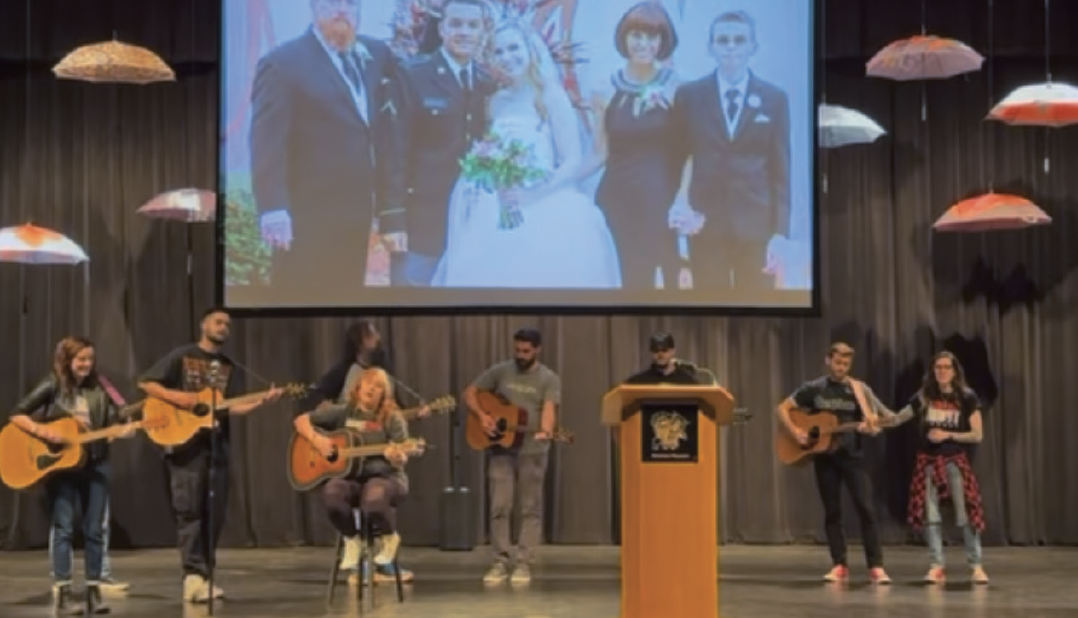
She also said that “I’m deeply grateful to stand up this day, in this auditorium, a place stitched with memories, to celebrate the life of someone who didn’t just shape my high school experience, but helped to shape me.”
Lindsay added, “Mr. Warren was brilliant, passionate and, let’s be honest, a little terrifying. He knew when to challenge us and when to protect us. His office felt like the safest place in the world. It was where we cried, we laughed, we vented and we dreamed. I remember he showed us what looked like a baseball card of a young pop singer no one had ever heard of. He said, ‘Believe me, she is going to be huge.’ We rolled our eyes and thought this is just another weird Warrenism. The pop singer? Britney Spears.”
That was when I left the building, but it’s clear to me that Jas Warren left behind so much more than just hundreds of high school theatre awards. He built hundreds of young people into amazing people, not just amazing actors.
I missed the final performance of the day, but Elliot Cazes recorded it for me (above right): Green Day’s “Time Of Your Life.”
Just perfect.

